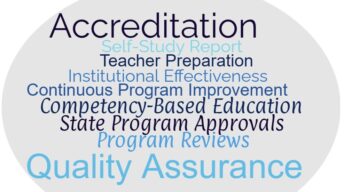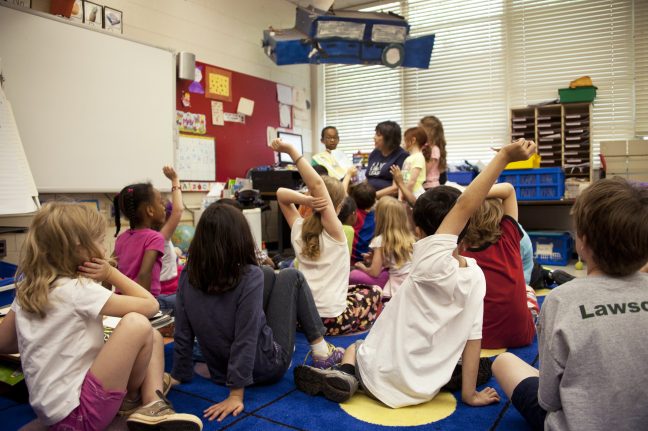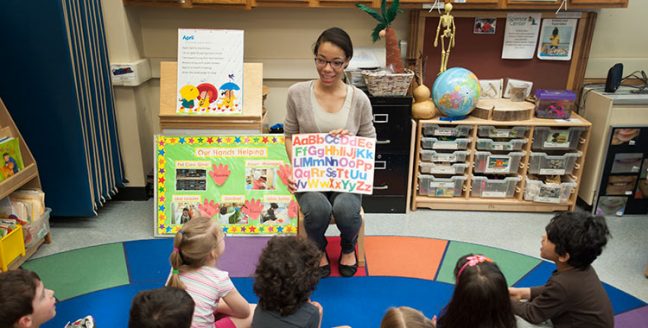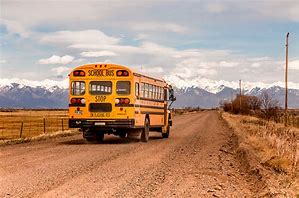It’s no secret that there’s a national teacher shortage. Qualified educators are in short supply across the nation. There are nearly 3.2 million teachers serving approximately 98,000 traditional public schools in our nation. Many schools experience a nationwide shortage of math, science, English language learning, and special education teachers each year.
Reasons for a National Teacher Shortage
There are several reasons why teachers are in such short supply in every state. Here are a few of the most common:
Low Pay, Lack of Respect
Many individuals find out early on that they can major in another field and have a lot more earning power throughout their career. Their starting salary is better, and there are more opportunities for advancement. The average salary of elementary and secondary public school teachers from 1969-2019 was about $61,000. New York teachers are paid the highest average salary ($86,000), while those in Mississippi earn the least ($45,574). When asked in a recent Teacher and Principal Survey, nearly 35% either agreed or strongly agreed with the statement, “If I could get a higher paying job I’d leave teaching as soon as possible.” That’s an alarming statistic.
In addition, those in the teaching profession simply aren’t afforded the same level of respect as in other industries. In some cases, society views teachers as little more than cheaper options for childcare. When asked in that same survey about stress and disappointments they experience within their schools, nearly 28% of teachers agreed or strongly agreed that the stress and disappointments just weren’t worth it.
Now, does that mean that all those teachers will leave the classroom for good? It’s unlikely. But even losing 10% could make class sizes even larger and significantly impact student learning.
An Aging Workforce
We have an aging workforce in our schools. The average age of public school teachers nationally is 42.6, with more than half ranging in age from 30-49. Depending on the retirement structure in their state, some teachers will remain in the classroom until 65, while in a few states they can retire in their 40s. Teaching is like most other professions: Those who love what they do will continue to work, while those who don’t will look for the nearest exit door.
Some school districts have opted to offer “early out” incentives to cut costs. That makes sense from an economic perspective. However, when seasoned teachers leave they’re often replaced by inexperienced teachers fresh out of college. To some that might sound appealing, given the increasing emphasis on technology and the perception that younger teachers possess greater skill in that area this sometimes is a misnomer. Youth doesn’t ensure competence in technology; knowledge and skill do.
In addition, veteran teachers have an impact on much more than their own classroom. They lead curriculum committees and make important decisions about textbook adoption. They serve as mentors for new teachers and sometimes, even for new building principals. Over the years they have amassed a tool chest of instructional methods that are effective with students in that community. Their loss is felt throughout an entire school.
COVID’s Exacerbating the National Teacher Shortage
We know that COVID-19 has affected every aspect of our lives. It’s also impacting our nation’s teachers and thus, our nation’s students. Some teachers have been infected while others are fearful of bringing the virus home to their families. Those who are able to report to school onsite feel overwhelmed by the extra pressures placed upon them, and the additional responsibility for ensuring students wear masks, wash their hands regularly, social distance, and the like. In a recent survey of 140 school superintendents in Colorado, one summed it by saying:
“Our teachers and staff are stretched thin, and we can’t offer them any relief,” one superintendent in northwest Colorado wrote. “We don’t have enough subs, and I fear we will begin to lose teachers and other staff. The emotional stress our teachers and especially our leaders are under is vast, and I don’t know how long we can endure.”
How to Tackle the National Teacher Shortage
We are all interested in making sure each student has a qualified teacher in their classroom. Think tanks such as the Learning Policy Institute are compiling research and data that states can use to address the problem within their own borders.
Loosen Requirements
Several state departments of education have decided to loosen the requirements to become a teacher. For example, Missouri recently decided to eliminate the cumulative GPA requirement from all teacher certification rules. Other states have decided to no longer require an individual to pass a content exam before admitting them into a teacher preparation program.
Simply loosening or eliminating requirements may increase teacher supply, but the impact it could have on student learning is sobering.
Grow Your Own Teachers
Some school districts are turning to area residents who may already work as a paraprofessional or substitute teacher. These individuals have already earned several college credits but haven’t yet completed state certification requirements. Building principals frequently encourage these individuals to complete those requirements, sometimes even finding scholarship funds within the community or at a local university. These “Grow Your Own” models enable school principals to staff classrooms with individuals who have strong roots within the local community. Frequently, their own children are enrolled in the district. Those are individuals who aren’t likely to leave.
California education officials have implemented an initiative approved by the California Commission on Teacher Credentialing that focuses on growing the number of qualified mathematics teachers. At the district level, the Los Angeles Unified School District (LAUSD) is shoring up its supply of special education and other hard-to-find teachers through its STEP UP and Teach program. The program provides mentoring as well as financial support to qualified candidates. These candidates may already employed in the district as paraprofessional and who have strong ties to the local community.
This “grow your own” approach is similar in many ways to other nationwide efforts such as the Kansas City Teacher Residency project. It’s based on the premise that novice teachers learn best under the careful mentoring of experienced educators. It’s also competency-based in many respects, because teacher candidates must demonstrate what they know and are able to do on a daily basis.
A National Solution Needed
The national teacher shortage will only get worse unless we collectively get serious and implement data-informed initiatives. The federal government should drive these efforts. States can then implement them. Our new Education Secretary Nominee Miguel Cardona has extensive experience at the P-12 level and understands the crisis facing our schools. He needs to form a blue-ribbon panel to tackle this problem. That group should develop a blueprint for how the federal government and states can partner to find workable, effective solutions.
A national problem such as a shortage of qualified educators requires a national response.
###
About the Author: Dr. Roberta Ross-Fisher has expertise in higher education quality assurance, educator preparation, and competency-based education. A former public school teacher and college administrator, Roberta is now an educational consultant specializing in the Council for the Accreditation of Educator Preparation (CAEP).
Email: Roberta@globaleducationalconsulting.com
Top Graphic Credit: CDC on Unsplash



